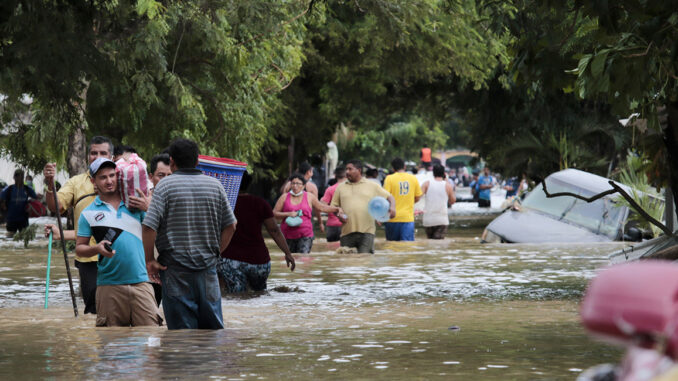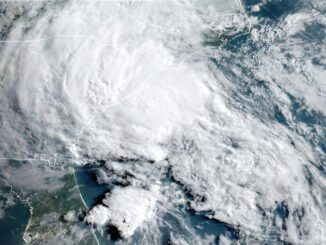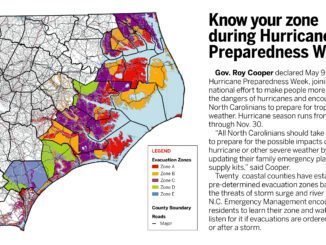
SAVANNAH, Ga. — As the third named storm to emerge during November, Tropical Storm Sara serves as a reminder that the Atlantic hurricane season hasn’t quite ended.
Sara formed in the western Caribbean Sea before making landfall last week on the northern coast of Honduras, dumping torrential rains in a slow weekend crawl across parts of Central America.
Sara follows two other named storms so far this month. Tropical Storm Patty brought heavy rain to the Azores and dissipated without striking land. Then Hurricane Rafael struck Jamaica and the Cayman Islands before tearing across Cuba as a Category 3 storm.
That has made for an unusually active final month for the hurricane season when forecasters typically see a single named storm every year or two. And the 2024 season still has two weeks to go.
The hurricane season for storms in the Atlantic Ocean, the Caribbean Sea and the Gulf of Mexico officially runs from June 1 to Nov. 30.
Though named storms have been known to form before and after that six-month period, hurricane season reflects the months when weather conditions are more favorable for producing tropical storms and hurricanes.
Ocean temperatures must reach at least 79 degrees Fahrenheit to fuel hurricanes. Hurricane season is also when the upper atmosphere tends to have reduced wind shear, or changes in wind speed and direction that tear hurricanes apart.
Those hostile winds tend to ramp up later into the fall, making it more difficult for November storms to form, said Levi Silvers, a hurricane researcher at Colorado State University.
“We have the water temperatures to allow for these storms to form,” Silvers said. “But it’s increasingly unlikely we’re going to get the conducive winds.”
Based on the 30-year period from 1991 to 2020, November typically sees one tropical storm every year or two. Storms that strengthen into hurricanes are rarer during the season’s final month, with one occurring generally every two years, according to the hurricane center.
Since 1851, a total of 125 tropical storms have been recorded during November, said Brian McNoldy, a hurricane researcher at the University of Miami. About half of those storms, 63, went on to become hurricanes. And 12 strengthened into major hurricanes with winds above 110 mph.
Rafael earlier this month forced the evacuation of 283,000 people in Cuba and destroyed 460 homes. It was the Atlantic basin’s first November hurricane since 2022 when the season wrapped up with three storms. One of them, Hurricane Nicole, became the first November hurricane to make landfall in Florida since 1985.
Only two other November hurricanes are known to have struck the U.S., in 1861 and in 1935, according to the National Oceanic and Atmospheric Administration.
Since 1953, there have been seven November hurricanes devastating enough to have their names retired, McNoldy said.
The last ones were Hurricanes Eta and Iota, both Category 4 storms that smashed into the Caribbean coast of Nicaragua two weeks apart in November 2020. The back-to-back hurricanes were blamed for a combined 239 deaths and $8.2 billion in damage across Central America.
They struck at the end of the most active hurricane season on record with 30 named storms. The busy 2020 season exhausted the year’s alphabetical list of storm names by mid-September. Later storms, including Eta and Iota, were identified using Greek letters.
Other destructive November hurricanes that had their names retired were Otto in 2016, Paloma in 2008, Noel in 2007, Michelle in 2001 and Lenny in 1999, according to McNoldy.




